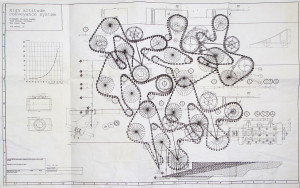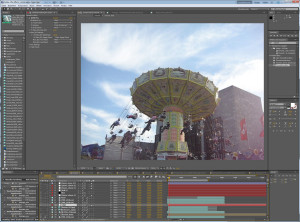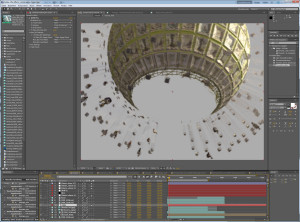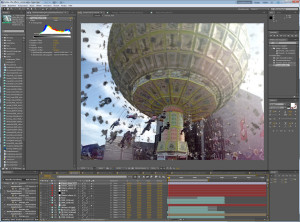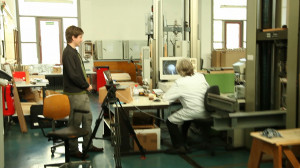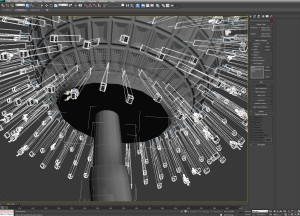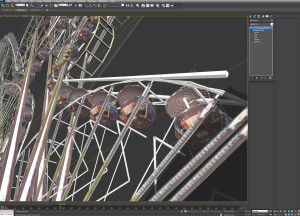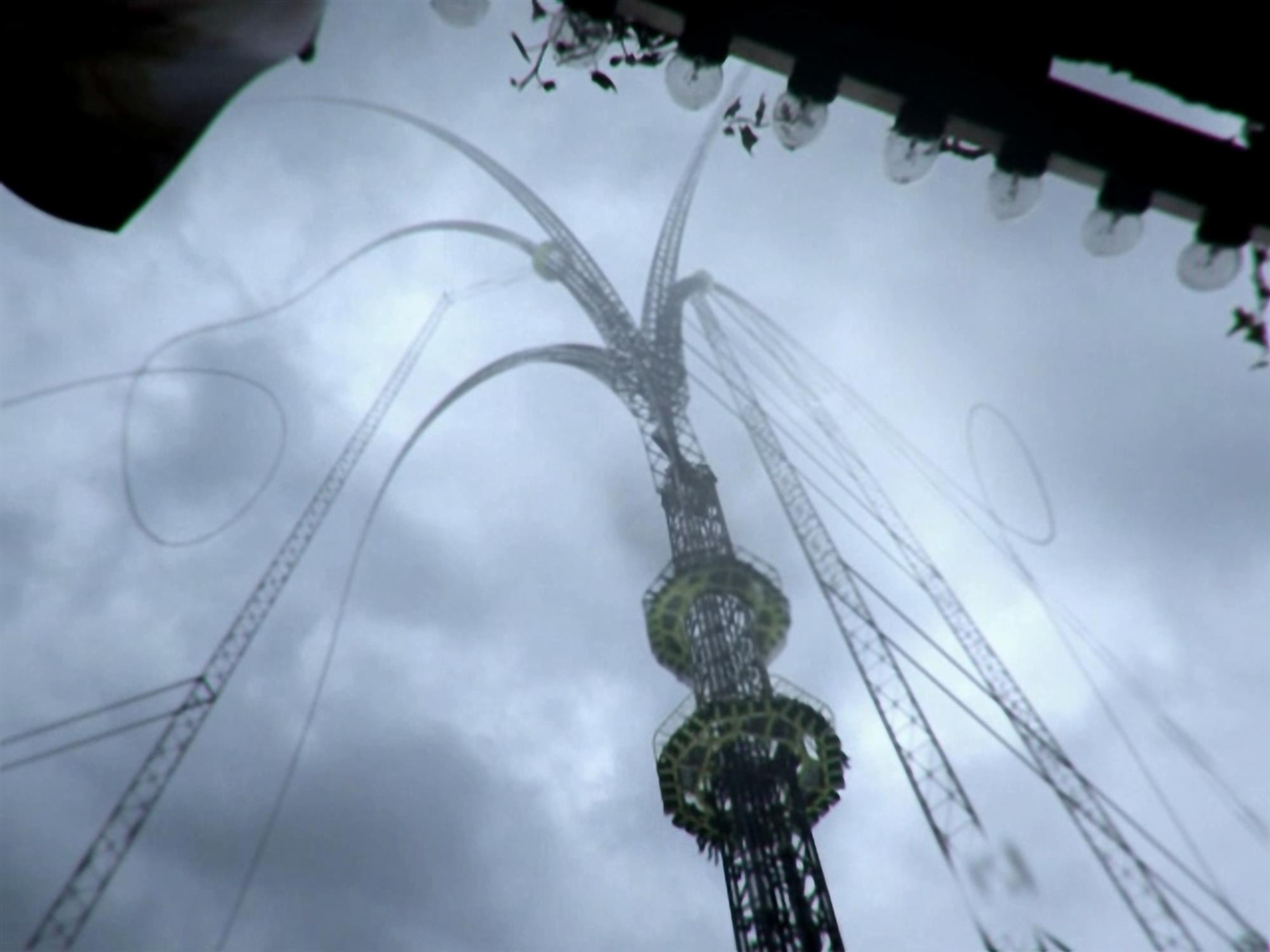
InFocus: Till Nowak - The Director of The Centrifuge Brain Project by ShortFilmWindow
May 28th, 2015
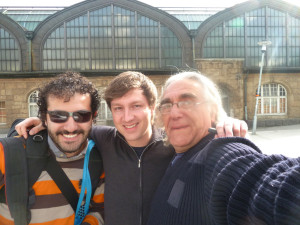 Till Nowak, comes across as a young, quiet, unassuming filmmaker and one wouldn't guess that inside that quiet exterior he would be conjuring imaginative films like The Centrifuge Brain Project. He was kind enough to take time out and answer some of the questions (as a first, some of the questions was sent to us by our viewers). Reading his answers, gave a peek into his passion for filmmaking and his intensive process of using real world inspirations to design fantastical machineries. We also got to know how he draws inspiration not just from contemporary filmmakers but also from classical graphics artists like M.C Escher.
Till Nowak, comes across as a young, quiet, unassuming filmmaker and one wouldn't guess that inside that quiet exterior he would be conjuring imaginative films like The Centrifuge Brain Project. He was kind enough to take time out and answer some of the questions (as a first, some of the questions was sent to us by our viewers). Reading his answers, gave a peek into his passion for filmmaking and his intensive process of using real world inspirations to design fantastical machineries. We also got to know how he draws inspiration not just from contemporary filmmakers but also from classical graphics artists like M.C Escher.
Hello Till Nowak /frameboX! We all really loved your film The Centrifuge Brain Project! Can you tell us a little about yourself? What is your background and what drew you to film-making?
I was born in 1980 in the small city Mainz in the middle of Germany. My parents are artists, so I was always surrounded by art and creativity. When we were children my brother and me had the chance to play a lot with my fathers videocamera and super-8 cameras and create little stop motion films. I have always been fascinated by the emotional impact of films and the magic of visual effects.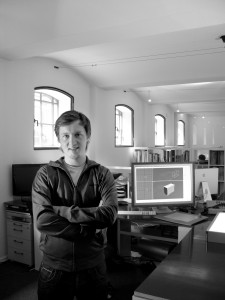
I got my first computer when I was 12. The mix of art, film and my PC opened many possibilities for me and I began to work professionally very early. When I was 19 I founded my little studio “frameboX”. At the same time I started studying media design at the University of Applied Sciences in Mainz. First I did a lot of classical print and web design, but over the years I specialized in computer generated images and animations.
So I would say my background is a mix of artistic influences from my family, absorbing movies from mostly the European and the US movie culture and a nerdy passion for computer graphics. And I love science, by the way.
The Centrifuge Brain Project is an unusual film. It is clearly a fictional but fools one to believe that it is a documentary with its self-serious air. How did you arrive at this story and this form of narrative?
I never was a fan of heavy stylisation, I always loved a realistic approach. So if you choose the most realistic style for a fictional film you automatically end up close to what’s called a mockumentary. It was never my intention to make people really believe that this was real, I just wanted the audience to feel as if they were eye witnesses, to enhance the impact of the idea. Films like "District 9" or "Children of Men" were a big inspiration for me. And since 15 years I worked for many real TV documentaries, which probably had an influene on me as well.
To explore the world of amusement parks was something that I had carried with me since I was a child. I had always been facinated by the strong robotic machinery under the fassade of fun and entertainment and payed more attention to the sounds of the motors and the steel constructions than the funny decoration – in fact I always found it a little bizarre that we humans use gigantic industrial devices like toys. In the end I used it as a metaphor for our endless search for happyness and satisfaction, without ever really reaching the goal.
We love the fantastical imagination and the rides. Especially the one where the 14 hour ride that looks like complex gears of a watch. What were your references for the visual effects and how did you go about designing them?
There is no specific reference, they are just free, improvised designs. I went to amusement parks and filmed real amusement rides. While filming I already tried to imagine how they could be „extended“, as a rough idea, and filmed the empty sky above them, which I would later fill with the digital extensions. So in many ways the design is a continuation of the underlying real amusement ride. I analysed its motion, its rhythm, its function and exaggerated it. My goal was to find the balance between complete absurdity and believability - to design it in a way that it moves and feels real, but at the same time reach the maximum of absurdity that was possible. So the designs grew out of the real footage, using a lot of artistic improvisation. Over the last ten years it became my favourite artistic method to “sample” a bit of reality and manipulate it digitally. It became an artistic process for me which I usually do without any planning or sketches, just starting out of an idea directly modelling in 3D.
Your previous short was an animation. How do you, as a director, find both the forms different? What does one form hep you be better in other form.
I think I originally started to do animation just because it was the only available tool for me to create the epic visuals that I had in my mind (for Delivery“ in 2004). As a film consumer I am more interested in live action than in animation, but as a film maker there was just no way to do a big live action production, but me and my computer could „simulate“ a live action production by using animation. It liberates me as an artist – I can do whatever I can imagine, and over the past 15 years animation turned into a purely artistic process for me. I don’t have to think about the technology any more, because I know my workflow so well, I can just use it like a painter uses the brush and the canvas.
But still I think the strongest emotions come from real alive characters and the deepest mood comes from real, dusty, tangible, live action images, therefore I started to work more with live action recently. The animation still stays a key component in all my works, even if it’s just a visual effects extension in a live action project, because it is the element of fantasy. CGI is the extension that pushes the idea beyond reality.
From my animation work I learned a lot about lighting, timing and cinematography. It took me a while to understand and to accept that in live action productions all the disciplines, such as lighting, cinematography, design, editing, etc. are different professions and different departments. I was so used to combine it all in one person. That can be an advantage, but also a disadvantage. I am still learning how to separate the „directing“ from all the other professions when I work on bigger projects.
This film has had a successful journey in the film festivals. Apart from that it is very popular online as well. Lots of short filmmakers are not aware of the journey that starts after the film is made. How do you go about choosing festivals for your films? What advice would you give them?
I have a list of festivals that I collected since I started to participate in film festivals in 2005 with my shortfilm "Delivery".
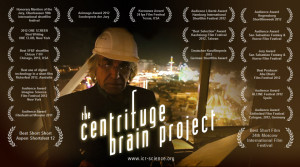 Back then I had no idea about the world of film festivals. I had finished my shortfilm and put it online, until one day a friend recommended me to enter it to a festival. In the end Delivery“ played at over 250 festivals and I travelled over 3 years to many of them. I did not differentiate between small and big festivals, I just entered it to as many festivals as possible. Now, with "The Centrifuge Brain Project“" and my next film, which is about to be finished, I am focussing more on the big festivals. Because once your film is successful in big festivals, the small festivals become aware of it and write you emails to invite your film. So it makes sense to start with the biggest possible festivals. However, in general the more festivals your film participates, the more likely you win awards, which is important for a shortfilmmaker to survive. There is a good list on www.german-films.de under "festival guides".
Back then I had no idea about the world of film festivals. I had finished my shortfilm and put it online, until one day a friend recommended me to enter it to a festival. In the end Delivery“ played at over 250 festivals and I travelled over 3 years to many of them. I did not differentiate between small and big festivals, I just entered it to as many festivals as possible. Now, with "The Centrifuge Brain Project“" and my next film, which is about to be finished, I am focussing more on the big festivals. Because once your film is successful in big festivals, the small festivals become aware of it and write you emails to invite your film. So it makes sense to start with the biggest possible festivals. However, in general the more festivals your film participates, the more likely you win awards, which is important for a shortfilmmaker to survive. There is a good list on www.german-films.de under "festival guides".
How has making shorts helped you find your voice. What do you think is the strength of the medium?
Shortfilms are an artform of its own, like a poem, or an essay, compared to a novel, which would be the long feature film. Primarily shortfilms are the playground for young filmmakers to try things out. The pressure, risk and dependencies that come with a big feature film production are very tough, while in the world of shortfilms anything seems possible if you are very motivated and passionate.
 My shortfilms brought me much further than I ever expected. I got contact to almost every big studio in Hollywood and lots of possibilities opened. Travelling to festivals played a big role in this as well. For example, I was scouted for my first big movie design job by a british producer at the festival in Annecy in France, so it was essential for my carreer that my film played there. However, as an artist my main issue is that shortfilms are just too short. To identify with a character, to really dive deeply into a story and get deeply emotional I end up visiting the classic feature film format. Do you know the feeling, when you come out of the dark cinema after a 90 hour movie, and you are so filled up with the emotions that the whole world seems to look different? After watching a really strong movie it sometimes takes hours until I find back into my "normal" mood. I love doing and watching shortfilms, but rarely got this kind of sustainable brain infusion from a shortfilm. That’s also why I am dreaming of making a feature film one day.
My shortfilms brought me much further than I ever expected. I got contact to almost every big studio in Hollywood and lots of possibilities opened. Travelling to festivals played a big role in this as well. For example, I was scouted for my first big movie design job by a british producer at the festival in Annecy in France, so it was essential for my carreer that my film played there. However, as an artist my main issue is that shortfilms are just too short. To identify with a character, to really dive deeply into a story and get deeply emotional I end up visiting the classic feature film format. Do you know the feeling, when you come out of the dark cinema after a 90 hour movie, and you are so filled up with the emotions that the whole world seems to look different? After watching a really strong movie it sometimes takes hours until I find back into my "normal" mood. I love doing and watching shortfilms, but rarely got this kind of sustainable brain infusion from a shortfilm. That’s also why I am dreaming of making a feature film one day.
Unlike in the literary world, it is rarely seen that in the industry people use alias/pseudo names for themselves. What’s the philosophy behind using the alias of frameboX for yourself?
Originally frameboX was the name of my company which I founded together with a friend in 1999. I must admit that the name is quite generic in the field of visual effects, not very original. But on the other hand we were lucky that such a generic „brand“ was not already taken by any big company in the CGI world, that’s why we chose it. The only little original twist is that we wrote the last letter „X“ as a capital letter, instead of the first letter, which can be seen as a symbol for the inversion of the usual. However, after a few years I realized that I didn’t want to become a manager and business man and mostly wanted to be an artist, doing the work myself. So I did not expand any more towards hiring people and forming a real studio, instead I became something like a one-man-studio. I am doing many professional production jobs for TV, cinema and advertising, so frameboX is originally the name of my little one-man-studio and sometimes blends into some kind of artistic pseudonym.
By the way, around 2007 an animation institute in New Delhi in India started to work under the name of Frameboxx, which is very similar to my company name. I received hundreds of emails from students from India who were confused and thought that my website is the institute website from Delhi.
Since we love your whacky imagination, we can’t wait to see more work from you. What are your current and future projects.
I am currently finalizing a very ambitious new shortfilm which I worked on for more than 2 years. It is 17 minutes long and in the beginning of the film it will look like a fully computer animated film.
But throughout the story we find out that we are inside the psychotic mind of a crazy old man and the film transforms gradually into a live action film. It is about a psychotic, homeless street musician guy who wants to play a concert for his daughter, which he is not allowed to have contact to. The story plays on both levels: fantasy and reality. Towards the end it is a completely real character drama, with real actors, real sets and no more animation. It’s a seemless transformation from one genre into the opposite genre - an experiment I wanted to do since many years, quite complicated and an extreme amound of work. It will premiere in a few months at a big film festival.
Lastly, we wanted to know your key influences - artists, filmmakers and philosophers. What are your current favorite filmmakers.
As a child I was not allowed to watch a lot of TV, but whenever my parents were not at home I secretely watched thrilling science fiction films like “Dune”, “Alien” or “Star Wars”. As a contrast to that my parents – they are both artists – fed me and my brother with the films of Jacques Tati, Charles Chaplin and a lot of classical art and culture. This mixture must have had a strong influence on me. In my work you can find similarities to the painters of romanticism and besides that I was always fascinated by the works of artists like M.C. Escher, H.R. Giger, Erwin Wurm, David La Chapelle as well as filmmakers like David Fincher, Bob Zemeckis, Jean Pierre Jeunet, Michelle Gondry or Terry Gilliam and many others. They are masters of creating a perfectly thrilling experience and at the same time create their own believable, sometimes bizarre world. Philosophically I admire Immanuel Kant and Mahatma Gandhi. However, it’s difficult for me to pick key influences, because that highlights just a few big names among all the great art and philosophy that I probably absorbed without remembering right now.
Till Nowak has been kind enough to share a book that contains details of the making of The Centrifuge Brain project. You can write to us at shortfilmwindow at the rate gmail dot com to get it for Free. His film is available on ShortFilmWindow






